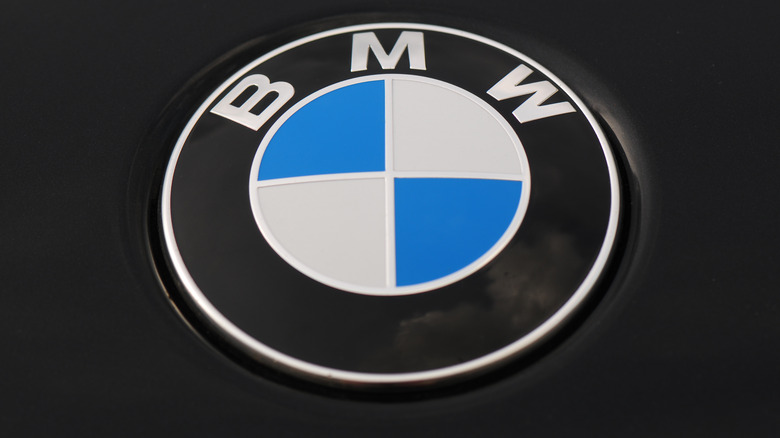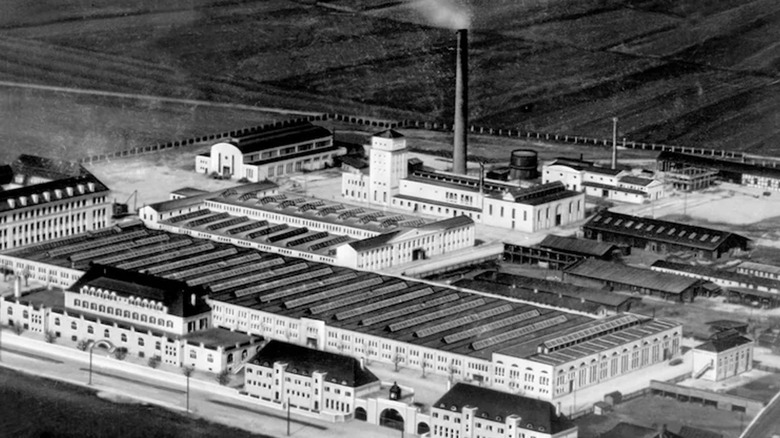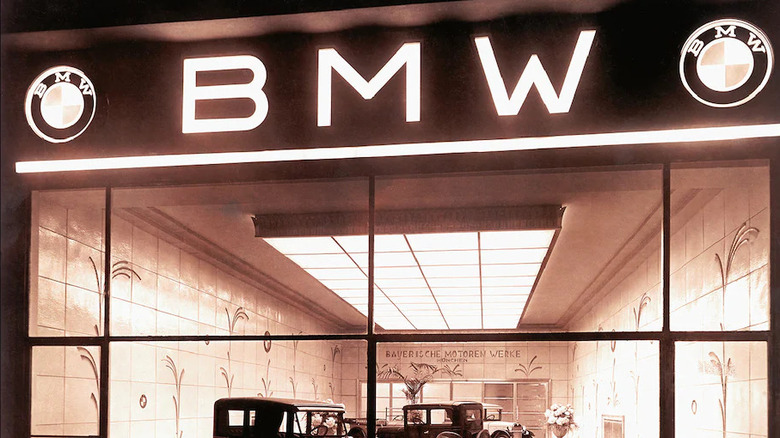Here's What BMW Stands For (And The History Behind The Name)
If you were prompted to name a bunch of major automotive manufacturer brands off the cuff, odds are good there would be a spot on your list for BMW. BMW is one of the giants of the industry, representing Germany in the global automotive stage and bringing its reliable cars all over the world. While BMW has a significant presence in the western vehicular stage, though, there are a few things about the brand that a casual observer may not know about.
For instance, do you know what "BMW" actually stands for? It's an odd thing, when an acronym supersedes a brand's actual name and becomes its primary identifier, but it's not just a marketing gimmick. BMW stands for one of the company's original names, Bayerische Motoren Werke. Translated from German, that means Bavarian Engine Works. It's a surprisingly simple name for such a globally-recognized brand, but this name actually has quite an interesting history behind it, especially since it wasn't even the first name the company was known by.
The original German company developed various engines in 1913
All the way back in 1913, right at the turn of the automotive renaissance, a company based out of the German state of Bavaria was developing all kinds of engines and engine-adjacent devices for the then-German Empire, which would eventually see usage during World War I. This company was called Rapp-Motorenwerke, and it plied its trade primarily on aircraft engines rather than cars.
In 1916, the owner of the company, Gustav Otto Flugmaschinenfabrik, went bankrupt, and its assets were sold off and reformed as another company, Bayerische Flugzeugwerke AG, or BFW for short. One year later, the name of the company was changed once again, this time to Bayerische Motoren Werke. While we had reached BMW at this point, though, this wasn't quite the BMW that we know.
BMW became a publicly traded company in 1918, switching over from aircraft engines to train brakes after the Treaty of Versailles ended German aircraft production. This was a successful switch for the company, so much so that it attracted the attention of rival company Knorr-Bremse AG. In 1920, Knorr-Bremse AG purchased a majority stake in BMW and absorbed it, eliminating it as an independent entity.
BMW returned in the 1920s with a new owner and direction
A couple of years later, a wealthy investor named Camillo Castiglioni became a majority shareholder in Knorr-Bremse. With this power and his wealth, he purchased full ownership of BMW and its subdivisions out from under Knorr-Bremse, returning all of it to its original owners back in Bavaria. The brand briefly resumed its old moniker of Bayerische Flugzeugwerke AG, but later that same year, it returned to its second name of Bayerische Motoren Werke, this time for good. Going forward, BMW became a hallmark of German automotive engineering, with its classic logo beginning to appear in print advertisements around the country and, eventually, beyond.
BMW's corporate headquarters and primary production plant are still based out of the original BFW offices in Milbertshofen, Munich. Despite all of the renaming and changing hands, the company maintains that its official birthday is March 7, 1916, the day the company that would become BMW was first formed from the remnants of Rapp-Motorenwerke.


